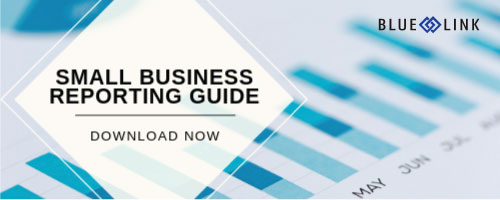Picture This: Your wholesale and distribution business has been up and running for a year now, and in that time you have been successfully entering all of your transactions into your all-in-one accounting wholesale software. The system is showing that you have a lot of money in the bank, and therefore the company must be doing well, right?
Not necessarily. No matter what business you’re in, money in the bank is only one part of the picture when it comes to measuring a company’s overall health. An abundance of cash can be the result of much more than just sales revenue, and money in the bank could come from a loan, an initial contribution by the company’s owners, or a recent influx of payments due on accounts receivable. However, just looking at cash in isolation does not take into consideration other important factors such as interest or payments due on the loan, your accounts payable balance and other expenses and credits owed.
In order to get a better understanding as to how your business is actually performing, there are other metrics and data points that will need to be evaluated. Most accounting wholesale systems will provide specific tools used to report on overall/departmental company performance and health. For example, certain systems will automatically calculate specific financial ratios based on numbers pulled from the GL, allow users to review general ledger details, generate reports on specific business activities and create financial statements such as balance sheets and profit and loss statements (P&L). While some combination of the above can usually give you good insight into how your specific business is performing, P&L statements are especially useful in doing so.
You may have heard the term P&L before with a different name – Income Statement. Both refer to the same type of statement which covers a period of time, usually a month, quarter or year and provides insight into a company’s revenues and expenses. The revenue section depicts the income earned from the sale of product or delivery of a service. In the case of a wholesale distribution business, the Cost of Goods Sold (COGS) is then deducted from the income. The resulting difference is referred to as Gross Profit (or Loss if negative), and reflects the profit the company has made on the sale of product, without taking into consideration the costs of operating the business. Operating expenses is where the next section of the P&L report comes into play.
All expenses of the business other than COGS are reported below Gross Profit, often in detail by type of expense (i.e. advertising, rent, salaries or travel). These expenses are then added together and the total is subtracted from the Gross Profit. The result is the company’s Net Profit (or Loss) for the specific period being reported on. This allows a business owner or manager to see if the company has made a profit for that particular time period, how much of that profit came from the sale of products and how much it was lessened as a result of operating expenses.
If the P&L shows a profit for the specific period, than great - the company must be doing well. Once again though, this is not necessarily the case. Evaluating P&L statements over multiple periods can give you a better indication of company performance, compared with just evaluating one period in isolation. This is why it is important to find accounting wholesale software that allows you to easily create and review P&L statements on a regular basis, such as once a month.
Example:
If you were to take a look at your P&L statement this month and see a $15,000 profit, this would probably make you pretty happy. But would you be just as happy if you then looked at last month’s P&L report and saw a $30,000 profit? This information might result in some questions such as:
- Why did my profit drop 50% from last month?
- Was last month’s profit amount an anomaly or is this month the anomaly? Or neither?
Evaluating and comparing your Profit and Loss statement period over period, can provide indications of the health of the business, growth direction and also highlight reasons for differences between periods. In the scenario just discussed, a quick look at the expenses may show a $10,000 increase in tradeshow expenses and a $5,000 increase in travel expenses in the current period over last period. Everything else being relatively consistent, that could be the reason for your decrease in net profit. If tradeshows are a one-time expense every year and usually help generate future revenues, it might be safe to assume that the P&L results are not showing a trending decrease in revenues.
Reviewing P&L statements period over period and especially month over month can allow you to see trends as they occur, giving you the opportunity to try and fix any negative ones and take advantage of opportunities. Monthly P&L statements can also highlight anomalies associated with certain business transactions and they can aid in catching posting errors close to when they occur.
In summary, looking at any piece of financial information in isolation may provide some benefit, but the better option is to review specific information over a collection of periods, and to combine that with reviewing other complementary financial information and departmental data.











